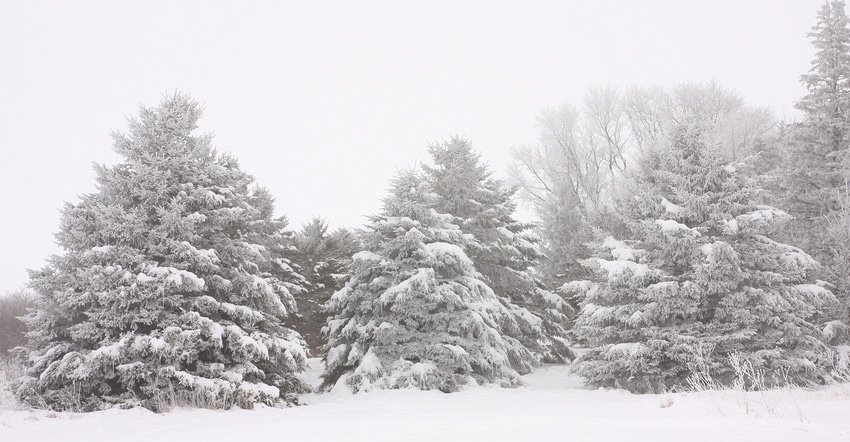April 2, 2019

Windbreaks have played an important role in livestock protection as Nebraska's farmers and ranchers have worked to protect their cattle during a long and harsh winter.
Since 1972, Nebraska's Natural Resources Districts have worked with landowners to plant more than 96 million trees and shrubs. Many of these plantings are multipurpose windbreaks that shade and shelter homes, reduce soil erosion, protect crops and provide food and cover for wildlife.
However, this winter, it was the protection windbreaks provided for cattle that proved most beneficial to Nebraska farmers and ranchers.
Windbreaks provide benefits to feedlots, pastures and calving areas by reducing wind speeds and providing livestock a reprieve from the harsh winter elements. Protecting the animals from the elements not only reduces stress and mortality, but also reduces feed requirements and saves the producer money.
"The red cedar windbreaks on our ranch were critical in protecting our cows this winter," said Justin Hammond, Nebraska rancher and Middle Niobrara NRD board member. "Without the windbreak protection, we'd have lost a large portion of our herd."
NRD foresters say now is the time to rehab an existing windbreak or design plans for the planting of a new one. According to the Nebraska Association of Resources Districts, local NRDs have ordered nearly 400,000 trees and shrubs for landowners to plant this spring.
"Our NRD tree program offers landowners an inexpensive way to protect their property," said Mike Murphy, Middle Niobrara NRD general manager. "NRD staff and foresters work with landowners to select the right trees for the property, design the space, and we can even plant them for you."
For a cost of about $1 per tree, conservation trees shade and shelter homes — reducing energy costs — protect and increase crop yields, reduce soil erosion from wind and water, improve water quality, control snow and preserve winter moisture, protect livestock, provide food and cover for wildlife, control noise, capture atmospheric carbon, raise property values, and add beauty to the landscape.
Each of Nebraska's 23 NRDs administer their own conservation tree program. Tree and shrub options may vary from district to district depending on what grows well in different areas of the state.
"The local NRDs really work with landowners to determine what species best fit a landowners’ needs," Murphy said. "In some areas, it may be eastern red cedar that offers the best protection, and in other areas, it may be a combination of species."
Trees arrive in early spring, and many NRD Conservation Tree Program order deadlines are quickly approaching. Contact your local natural resources district to complete your tree order.
Visit www.nrdnet.org to locate your local NRD.
Source: Nebraska Association of Resources Districts, which is solely responsible for the information provided and is wholly owned by the source. Informa Business Media and all its subsidiaries are not responsible for any of the content contained in this information asset.
You May Also Like




